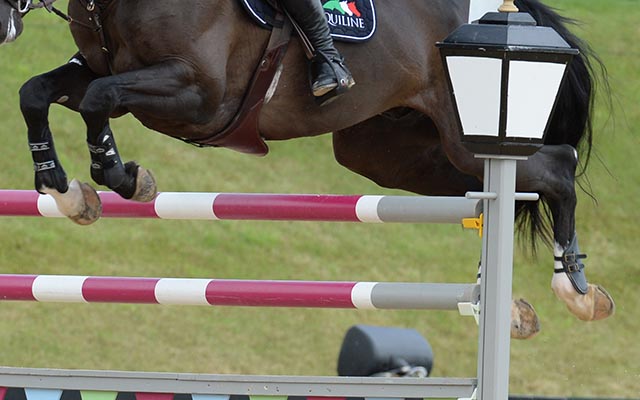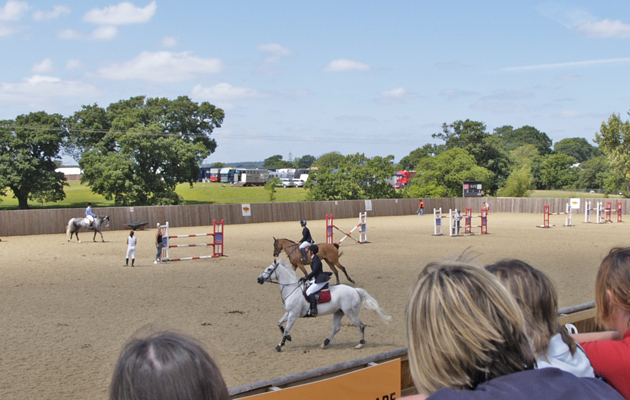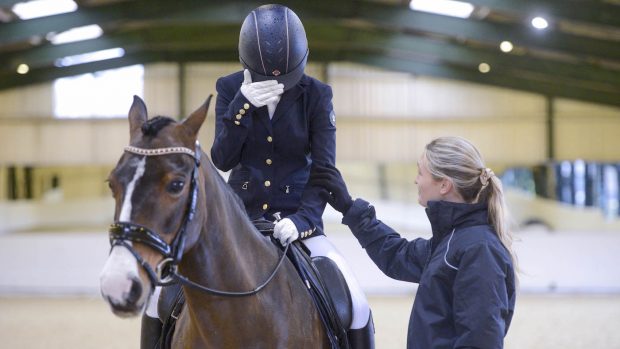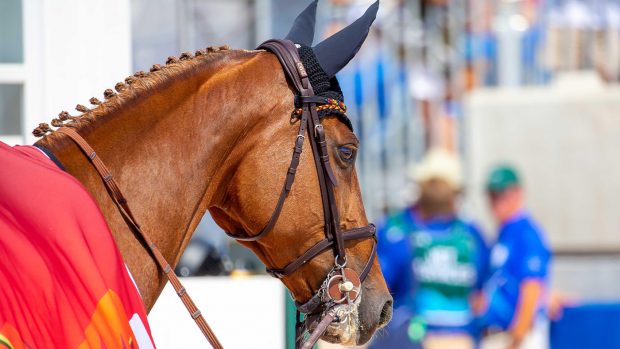Don’t you wish you could reproduce your best performance in training in the ring? But for so many riders, competitions do not bring out the best in us. We grapple with competition nerves, we doubt ourselves, we don’t really know what we’re aiming for –and the movements that felt so soft and easy back home feel alien and awkward under pressure.
Performance coach Charlie Unwin works across sport, business, and the military to help riders optimise their performance from the inside out in training and competition. The proof is in the pudding – his clients won four gold medals in Tokyo last summer, as well as three silvers and one bronze.
Here, he outlines three principles to help riders cope with pressure and bring out their best when it matters.
Manage your inner game
Charlie works with riders on the concept of reproducing their peak performance, and calls it “managing your inner game”.
“Take your best-ever performance and think about it hard – you know you can ride that well because you’ve done it before,” he says. “But what if you could repeat it every single time?
“Managing our ‘inner game’ is about consistently recreating our internal conditions to make our external performance the best it can be. The inner game can be a curious concept to equestrians because, in this sport, the animal forms the focal point and that can draw attention away from what is going on in our heads. However, the horse largely performs as a function of how you perform and what goes on inside our heads affects our outside performance.”
Charlie breaks this down into two aspects: thinking and feeling.
“‘Thinking’ involves training ourselves to focus on the simple things that count – like rhythm, straightness, accuracy,” he says. “It sounds easy, but in the high stakes of competition, there are distractions that pull our attention away from what we focus on in training.
“‘Feeling’ is both the emotional and physiological side – managing both so we can perform at our best. Nerves are a factor, but also how our body responds to stressful thoughts, in the form of tension in the muscles, which means suddenly our body doesn’t respond in the way it normally does. We are stiff or robotic, and the horse responds differently.”
If you’re riding at grassroots, perhaps aiming for your riding club team debut and think this all sounds a bit high-brow, it applies to you, too! Most of us who have ever competed know the feeling of tension and nerves.
“This is as important for someone competing in their first event as at the Olympics,” Charlie confirms. “The way you think and feel affects how you perform on your horse.”
Set effective goals
Charlie calls goal-setting one of the “most profound tools in sports psychology”.
“Athletes who are able to set real effective goals are able to manage their attention and direct their efforts towards what they want to achieve,” he explains. “Most of us don’t think about our goals that much. We have an idea in the back of our heads, but we don’t spend time working out what it will take to get us there and what it will feel like along the way.
Charlie says goals should be “specific, measurable and achievable”.
“No single goal will solve our problems,” he says. “For example, say we want to compete at Badminton or get our jockeys’ licence – a heck of a lot has to happen for us to get there, so it doesn’t play a role in our day-to-day behaviours.
“Conversely, if we set tiny little goals, we need to know they are moving us towards a bigger goal, which will motivate us. So goal-setting is a dynamic process; a blueprint that gives us a focus every day and all our actions should be connected to the process that gets results.
“I’d urge you to put pen to paper, breaking down your goals into as small chunks as you can. For instance, say your goal is to go clear at a particular level – certain components will always be true, like maintaining a rhythm, accuracy, using the corners and sitting up after the fence. Use these smaller goals in training as well as competition.”
Charlie cautions that the brain cannot focus on multiple thing at once.
“When you make goals for competitions, set really deliberate, controllable goals about one or two things on which you will be able to maintain your attention from beginning to end.”
Develop a winning mindset
All competitors know they need a winning mindset, but how do you develop and shape this? Charlie calls this an “inside-out” mindset – enabling riders to focus on the things that they can control and achieve their big goals.
“My starting point is to get riders thinking back to when you were a beginner,” he suggests. “The first time you rode, your only concern was to stay on and just doing that was a success. As you learnt about balance and started getting a tune out of the horse, you started jumping and before long you’re competing. At the first competition, you’re excited to be there, a bit nervous but you have nothing to lose and you end up doing well. It’s called beginners’ luck, but actually beginners have a very powerful mindset because they are focused wholeheartedly on the things that count, the things they can control, with no expectation of the outcome.”
Conversely, an outside-in mindset focuses on the outcome – clear rounds, results – and when it doesn’t go to plan, there’s nowhere to go, because the mind has not been trained to focus on the ingredients of the performance.
“Inside-out focuses on the inner game and allows the outcome to take care of itself,” Charlie explains. “It becomes more challenging the better the results, because your brain connects the reward system (dopamine) with the outcome, and you become vague about the process.”
Charlie urges riders to write down the little things that make a difference – whether that’s from lessons or any positive experiences.
“Before long you will have a ‘good news bible’ full of golden nuggets to fill you with confidence and remind you of the little things that enable you to get results,” he says.
So, take it step by step, work from the inside out, and get ready to bring you best into the ring – every time.
- For more tips and details on psychology and coaching courses, visit centre10.com
Charlie’s book, Inside Out: Train your Mind and your Nerve like a Champion, is available on Amazon.
You may also enjoy reading…

13 performance psychology pointers to help improve your results
Read these top tips from performance psychologist, Charlie Unwin, to help you get a head start this season

Mindset training: How to harness your nervous energy to improve your performance
Learning to harness your nervous energy will enable you to use competition jitters to enhance your performance. Performance psychologist Charlie

How to conquer competition nerves: real riders review expert tips
There is a wealth of tips on how to combat competition nerves online, but do they work for everyone? Rachel

10 tips to banish competition riding nerves
Do you suffer from competition riding nerves? Find out how to take control and use nerves to improve your performance

Subscribe to Horse & Hound magazine today – and enjoy unlimited website access all year round
Horse & Hound magazine, out every Thursday, is packed with all the latest news and reports, as well as interviews, specials, nostalgia, vet and training advice. Find how you can enjoy the magazine delivered to your door every week, plus options to upgrade your subscription to access our online service that brings you breaking news and reports as well as other benefits.




